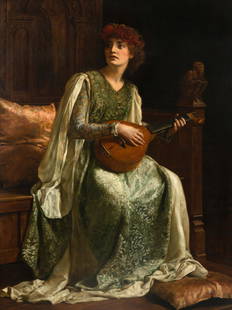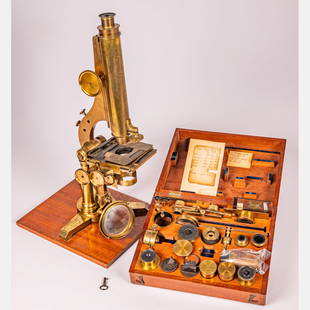
Affidavit Signed Lord Mayor of London Sir John Eamer, Knight,1802 w/ 1767 Marriage Certificate
Similar Sale History

Recommended Items






















Item Details
Description
Affidavit Signed by the Lord Mayor of London Sir John Eamer, Knight, attaching a 1767 Marriage Certificate | The Affidavit is dated September 13, 1802 . Sir John Eamer (1750–1823), was Lord Mayor of the City of London (1801-02), an Alderman for the City of London, and Colonel of Militia. He was knighted in 1794 and was granted a Coat of Arms (See photographs) which consists of a shield divided quarterly with two gold lions passant in pale in the first and fourth azure quarters, and three azure lions' heads erased on a silver chief in the second and third black quarter | The Affidavit is also signed by the Deponent, Thomas Blackstock, of the inner temple of the City of London, attorney at law, who certified that the attached Marriage Certificate, of Benson Feason and Elizabeth Foxcroft, was "a true copy of an entry made in the Register of the Parish Church of the United Parishes of Saint Vedast [Foster] and Saint. Michael Le Querne" | The Marriage Certification is signed by John Tringham, the Parrish Clerk | Blackstock is listed in The Legal Observer as being "of Serjaent's Inn, Solicitor." The Legal Observer, Or, Journal of Jurisprudence, Volume 7, by J. Richards, 1834, p. 267; and is listed in The Court and City Register of 1801 as being among the "Commissioners for Taking Affidavits in the Lancashire Courts, Resident in London" and having a business address of "5 Figtree-court, Temple" The Court and City Register for the year 1801, London: Printed by R. Noble, p. 215 | The Affidavit includes all seals and tax stamps. Dimensions Laid Paper Artist or Maker Sir John Eamer (1750–1823) Date 1802 Literature The Knights of England: A Complete Record from the Earliest Time to the Present Day of the Knights of All the Orders of Chivalry in England, Scotland, and Ireland, and of Knights Bachelors. Incorporating a Complete List of Knights Bachelors Dubbed in Ireland, Volume 2, by William Arthur Shaw, Genealogical Publishing Com, 1970, p. 302; and, The Encyclopaedia Londinensis, Volume 9, Edited by John Wilkes, 1811, p. 775 "Eamer, Å¿ir John, Alderman of London, Wood-Å¿treet, CheapÅ¿ide; April 15, 1795.--John Eamer, EÅ¿q; was knighted 1794, when Å¿erving the office of Å¿heriff of . London and MiddleÅ¿ex ; choÅ¿en alderman of Lang bourn Ward, Feb. 27, 1795; lord mayor of London 1801–1802; appointed colonel of the Royal EaÅ¿t London militia in 1803. He was born in 1749; mar ried, April 17, 1791, Mary, third daughter of John Herman Samler, of the city of London, eÅ¿q. by whom he has had twenty-two children, fourteen of whom died infants. The names of the reÅ¿idue are as follow : John-Harman Eamer, born in 1782; Charlotte-Anne, born in 1785 ; Charles-Samler, born in 1787, died in 1805, at Gazepoore, in the EaÅ¿t Indies; Harriett-Mary, born 1788; AuguÅ¿ta-Caroline, 1796; LouiÅ¿a-Catha rine, 1797; Alfred-Edward, 1799 ; Henry-Scott, 1803. —Arms. Quarterly: FirÅ¿t and fourth azure, two lions paÅ¿Å¿ant in pale or. Second and third Å¿able, on a chief argent, three lions' heads eraÅ¿ed of the firÅ¿t, impaling Samler ; or, a griffin Å¿egreant fans wings Å¿able, fire iÅ¿Å¿uing from his mouth and ears proper; on a chief argent three quatrefoils vert.—CreÅ¿t, in a ducal coro net a demi-lion rampant gardant proper, collared or, holding in his dexter gamb a dagger of the firÅ¿t.— Motto, Strenue et proÅ¿pere.—Family Seat, Putney Heath, Surrey; and Alfred P Beaven, 'Notes on the aldermen, 1701-1838', in The Aldermen of the City of London Temp. Henry III - 1912 (London, 1908), pp. 195-211. "For a hoax of which he was the victim, see Mr. Welch's Modern History of the City of London," p. 148. Notes Sir John Eamer is described as ‘a remarkable and controversial man’ written by Adrian Barlow, 2015. He was a friend of the Prince Regent although Stothard portrays him standing behind the prince’s brother on the opposite side of the hall. In 1794 he became Sherriff of London and was knighted by George III. He was elected to the position of Lord Mayor of London in 1801 so perhaps Stothard mistakenly attributed his later position to the listing rather than giving him as Sherriff. completing his term of office Sir John became Colonel of the East London militia, ‘with responsibility for safeguarding the London docks from possible French attack after the collapse of the short-lived Treaty of Amiens in 1802.’ His costume, as depicted by Stothard, is vaguely uniform-like but it is difficult to be sure. The other portrait, commissioned by himself when he became Lord Mayor is definitely uniformed. The portrait, by Mather Brown, is ‘a stunning piece of myth making’. As Barlow indicates: … he stands, flushed and supremely confident in scarlet uniform, his right elbow resting on the muzzle of a tall canon. Immediately behind him, his massive horse is draped in a cheetah-skin saddlecloth. Above and behind the horse loom the arms of the City of London, supported as heraldry demands by a griffin. Below, in a distant view barely glimpsed between the horse’s legs, soldiers can be seen drilling on a parade ground with St. Paul’s Cathedral in the background. The implicit title of this picture is all too clearly ‘Sir John Eamer, Heroic Defender of the City of London’. But lest we should think that, Malvolio-like, Sir John from humble beginnings had greatness thrust upon him, it would appear he got to where he was by using his wealth to buy influence and it was wealth, moreover, which came from the West Indian sugar trade and, by implication, the use of slaves. In 1805, he was court-martialled for ‘Conduct Unbecoming an Officer and a Gentleman’. Junior officers complained that he was bullying and abusive although, in his own defence, at a time when there was a threat of invasion and strict military discipline was necessary, Sir John found this in very short measure among the officers of the East London Militia and said some had stubbornly refused to turn out on parade. “I was prepared to expect much discontent and strong opposition; but I was not prepared to expect that the ruin of my character, the destruction of my peace, and the blasting of my fair fame were to be the price of my duty so discharged.” (Colonel Sir John Eamer’s Defence on the court martial held on charges preferred against him by Captain William Ayres, &c. &c. as cited by Barlow) Sir John was cleared of all charges although advised to temper what he said and how he said it. (‘Language, Timothy!’) However, just a year later he was ‘up before the Beak’ again for intemperate behaviour following a road accident in which his carriage, apparently on the wrong side of the road, had side-swiped another vehicle. Sir John, far from admitting any liability, ‘immediately began to exercise his horsewhip most actively upon the head and shoulders of the plaintiff’s servant.’ To make matters worse when the owner of the vehicle appeared, Sir John laid into him as well! This time, the court found against him and he was obliged to pay damages. Did this sober his behaviour? Well no, because in 1810, after refusing to account for some £8000 granted for equipping the Militia, Sir John was court-martialled again for behaving in a scandalous infamous manner, such as unbecoming the character of an Officer and a Gentleman towards one of his subordinate officers … Sir John [was] acquitted on all charges but reprimanded, again, for his use of ‘unguarded expressions’. His reputation, however, was damaged and a few years later he withdrew from the City and retired to Brighton. He died there on 29th March 1823, and his death merited only a brief note in the Gentleman’s Magazine: ‘On a warm treacherous sun-shining day, he imprudently ventured to sit on the beach, which sapped the foundation of a frame already bending under the weight of age and infirmity’. [Definitely overtones of ‘Well if you will go out without your vest on …]
Buyer's Premium
- 25% up to $1,000.00
- 25% up to $1,000,000,000.00
- 25% above $1,000,000,000.00
Affidavit Signed Lord Mayor of London Sir John Eamer, Knight,1802 w/ 1767 Marriage Certificate
Estimate $300 - $500
1 bidder is watching this item.
Shipping & Pickup Options
Item located in Gallatin (Nashville), TN, usOffers In-House Shipping
Payment
Accepts seamless payments through LiveAuctioneers

TOP








































